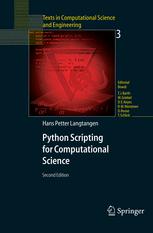

Most ebook files are in PDF format, so you can easily read them using various software such as Foxit Reader or directly on the Google Chrome browser.
Some ebook files are released by publishers in other formats such as .awz, .mobi, .epub, .fb2, etc. You may need to install specific software to read these formats on mobile/PC, such as Calibre.
Please read the tutorial at this link: https://ebookbell.com/faq
We offer FREE conversion to the popular formats you request; however, this may take some time. Therefore, right after payment, please email us, and we will try to provide the service as quickly as possible.
For some exceptional file formats or broken links (if any), please refrain from opening any disputes. Instead, email us first, and we will try to assist within a maximum of 6 hours.
EbookBell Team

0.0
0 reviewsThe goal of this book is to teach computational scientists how to develop tailored, flexible, and human-efficient working environments built from small programs (scripts) written in the easy-to-learn, high-level language Python. The focus is on examples and applications of relevance to computational scientists: gluing existing applications and tools, e.g. for automating simulation, data analysis, and visualization; steering simulations and computational experiments; equipping old programs with graphical user interfaces; making computational Web applications; and creating interactive interfaces with a Maple/Matlab-like syntax to numerical applications in C/C++ or Fortran. In short, scripting with Python makes you much more productive, increases the reliability of your scientific work and lets you have more fun - on Unix, Windows and Macintosh. All the tools and examples in this book are open source codes. The third edition is compatible with the new NumPy implementation and features updated information, correction of errors, and improved associated software tools.